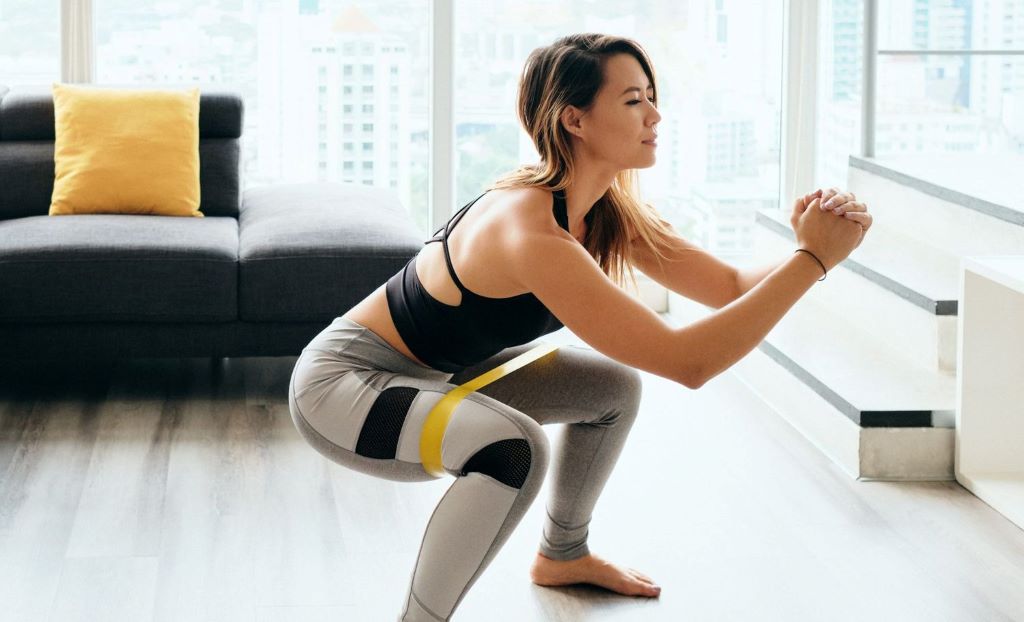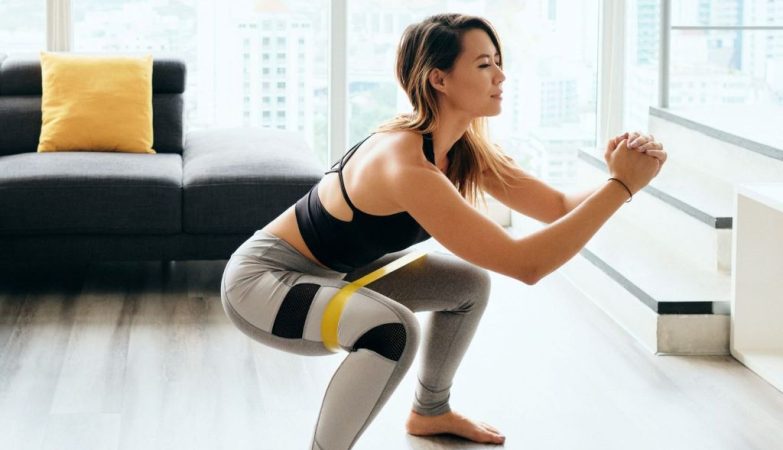Thinking about getting fit? Many people believe a gym membership is the first essential step. However, the recurring costs, travel time, and sometimes-crowded spaces can be major deterrents. The truth is, achieving your fitness goals doesn’t require a hefty membership fee or sophisticated machinery. In fact, some of the most effective and sustainable strategies for wellness are found right in your own home. At Sweet Healthy Living, we believe that fitness should be accessible to everyone, everywhere. This guide will show you how to build strength, improve endurance, and feel fantastic without ever stepping inside a commercial gym.
One of the biggest hurdles for busy people is simply finding the time. You might think you need long, dedicated workout hours, but consistency always beats intensity. Even short bursts of activity, spread throughout your day, can make a huge difference. Furthermore, managing the stiffness and aches that come from sitting at a desk all day is crucial for long-term health. Integrating a simple full-body stretch plan for busy people can dramatically improve your flexibility, reduce stress, and help prevent injury, making all your other activities feel easier and more effective. It’s about creating a holistic routine that fits your schedule, not forcing your schedule to fit a rigid workout.
Fitness is not just a 60-minute event. Instead, it is the sum of all the movement you do throughout the day.
Redefining Your Idea of Exercise
The first step is to broaden your definition of “exercise.” We often think of it as structured, high-intensity sessions. However, fitness also includes all the low-intensity movement you do. This is often called NEAT, or Non-Exercise Activity Thermogenesis. It’s the energy you burn doing everything except sleeping, eating, or dedicated exercise.
Increasing your daily NEAT is a powerful way to stay fit without blocking out time for a “workout.” Think about your daily routine. Where can you add small pockets of movement?
- Take the stairs instead of the elevator.
- Park your car further away from the store entrance.
- Stand up and walk around during phone calls.
- Set a timer to stand and stretch for one minute every hour.
- Do calf raises while brushing your teeth or waiting for coffee.
These small actions seem minor on their own. However, they add up significantly over the course of a week, helping to keep your metabolism active and your muscles engaged.
Turn Your Home into Your Personal Gym
You don’t need a room full of chrome dumbbells and treadmills to get a world-class workout. The single most effective piece of equipment you own is your own body. Bodyweight training, or calisthenics, is the art of using your own weight as resistance. It’s free, can be done anywhere, and is incredibly effective for building functional strength, stability, and muscle tone.
The “Big Six” of Bodyweight Training
Most effective workout plans are built around fundamental human movements. By mastering these, you ensure a balanced, full-body routine.
- The Squat: This is the king of lower-body exercises. It strengthens your quads, hamstrings, glutes, and core. Stand with your feet shoulder-width apart, keep your chest up, and lower your hips as if sitting in a chair. Aim to get your thighs parallel to the floor.
- The Push-Up: This is the ultimate upper-body and core exercise. It targets your chest, shoulders, and triceps. If a full push-up is too difficult, start by doing them on your knees or against a wall. As you get stronger, you can progress to the floor.
- The Lunge: Lunges are fantastic for building single-leg strength, which improves balance and stability. Step forward with one foot, lowering your hips until both knees are bent at a 90-degree angle. Push off your front foot to return to the start.
- The Plank: This is an isometric hold that builds incredible core strength. Hold your body in a straight line from your head to your heels, supported on your forearms and toes. Make sure your hips don’t sag or rise.
- The Glute Bridge: So much of our time is spent sitting, which can lead to weak glutes. Lie on your back with your knees bent. Squeeze your glutes to lift your hips off the floor until your body forms a straight line from your shoulders to your knees.
- The Pull (The Trickiest One): Pulling motions can be hard to replicate without equipment. However, you can use a sturdy table to perform inverted rows (lying underneath and pulling your chest up). Alternatively, you can buy a simple, inexpensive resistance band to do rows and pull-aparts.
A simple routine could involve doing 3 sets of 10-15 repetitions of each of these exercises, three times a week. This full-body workout might only take 20-30 minutes, yet it hits every major muscle group.
Embracing Cardio Without a Treadmill
Cardiovascular health is a pillar of fitness. It strengthens your heart, improves lung capacity, and burns calories. Thankfully, you don’t need an elliptical machine to get your heart rate up.
Find Your Favorite Way to Move
The best cardio is the one you will actually do. If you hate running, don’t force yourself to run. There are countless other options:
- Brisk Walking or Jogging: The classic and for good reason. It’s free, low-impact (walking), and a great way to explore your neighborhood.
- Jumping Rope: This is a high-intensity, low-cost option. A jump rope is cheap and portable. Just a few minutes of jumping rope is equivalent to a much longer period of jogging.
- Stair Climbing: If you live in an apartment building or have stairs at home, you have a built-in cardio machine. Walking or running up and down stairs is a serious workout for your legs and lungs.
- High-Intensity Interval Training (HIIT): This is the ultimate solution for busy people. HIIT involves short bursts of maximum-effort exercise followed by brief rest periods. A full HIIT session can be completed in just 10-20 minutes.
A simple HIIT workout could be:
- 30 seconds of jumping jacks
- 30 seconds of rest
- 30 seconds of high knees
- 30 seconds of rest
- 30 seconds of burpees
- 30 seconds of rest
Repeat this cycle 4-5 times for a powerful and efficient workout.
The Digital Age of At-Home Fitness
You are not alone in your home fitness journey. We live in a golden age of free, high-quality fitness content. YouTube, in particular, is a bottomless resource. You can find guided workouts for every possible interest, from beginner yoga and Pilates to advanced bodyweight strength and dance cardio.
Searching for terms like “at-home beginner workout,” “bodyweight strength routine,” or “15-minute HIIT” will give you thousands of options. Find an instructor or style that you enjoy. This makes your workout feel less like a chore and more like a hobby.
Flexibility and Recovery: The Overlooked Essentials
A common mistake is focusing only on the “work” part of the workout. However, recovery is where you actually get stronger. Your muscles repair and grow during rest, not during exercise. This is where flexibility and mobility come in.
The Importance of a Stretching Routine
As mentioned earlier, a stretching plan is vital, especially for those who sit for long periods. There are two main types of stretching:
- Dynamic Stretching: This involves active movement. Think of arm circles, leg swings, and torso twists. This is the best kind of stretching to do before your workout to warm up the muscles.
- Static Stretching: This involves holding a stretch for a period of time, usually 20-30 seconds. This is best done after your workout when your muscles are warm. This helps improve flexibility and signals to your body that it’s time to cool down.
Your stretching plan doesn’t need to be complex. Just 5-10 minutes a day can make a massive difference in how you feel, reducing stiffness and preventing injury.
Finally, never underestimate the power of sleep and hydration. Your body cannot repair itself without adequate rest, and every single function in your body requires water. Aim for 7-9 hours of quality sleep per night and drink water consistently throughout the day.
Conclusion: Fitness is a Lifestyle, Not a Location
Staying fit without a gym is not only possible; it is often more sustainable, affordable, and enjoyable. By shifting your mindset, you can see that fitness opportunities are all around you.
It starts with moving more in your daily life. It builds by using your own body as a powerful tool for strength training and supported by finding cardio you enjoy and tapping into the vast world of free online resources. Finally, it is sustained by prioritizing recovery, flexibility, and sleep.
You don’t need a membership card to be healthy. You just need a little space, a commitment to consistency, and the belief that you have the power to build a strong, fit body right where you are.
Frequently Asked Questions (FAQs)
-
How long should my home workouts be to see results?
You don’t need 60-90 minute sessions. Consistency is far more important than duration. A well-structured 20-30 minute bodyweight or HIIT workout, 3-4 times a week, can produce excellent results. On other days, a 10-minute stretch or a 30-minute walk is perfect.
-
Can I actually build muscle without heavy weights?
Yes. This is called progressive overload. To build muscle, you must continually challenge it. With bodyweight exercises, you can “progress” by increasing reps, decreasing rest time, or moving to a harder variation. For example, you can move from wall push-ups to knee push-ups, then to full push-ups, and eventually to decline push-ups.
-
How do I stay motivated to work out at home?
This is a common challenge. The best ways are to:
- Schedule it: Put your workout in your calendar like any other appointment.
- Find what you love: Don’t force yourself to do workouts you hate. Experiment with dance, yoga, or HIIT until you find something you look forward to.
- “Habit stack”: Pair your workout with a habit you already have. For example, do your 10-minute workout right before your morning shower.
-
What if I have absolutely no equipment at all, not even resistance bands?
You can still get a fantastic workout. Use household items for resistance. A full water bottle or a can of beans can act as a light dumbbell. A backpack filled with books can add weight to your squats. A sturdy chair can be used for tricep dips and incline push-ups.
-
Is walking enough to stay fit?
Walking is one of the best forms of exercise available. It’s low-impact, great for cardiovascular health, and beneficial for mental clarity. For a well-rounded routine, it’s best to supplement walking with some form of strength training (like the bodyweight exercises above) and flexibility work.
Related Topics:
Learn How to Make Spring Cleaning Fun : 7 Exciting Tips







